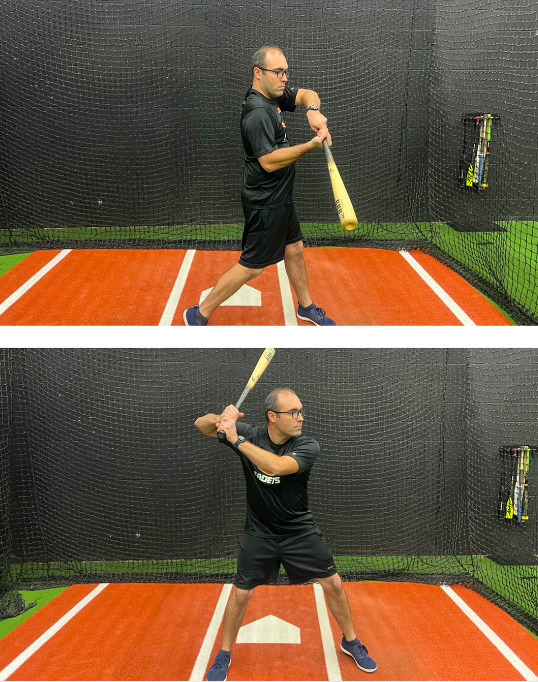In baseball, the ball descends at an angle ranging from 8° to a maximum of around 15°, depending on the pitch type. Ideally, a hitter aims to intersect the pitch for as long as possible, leading many elite hitters to swing at an angle of approximately 10° – a measurement known as the attack angle. Maintaining this angle increases the chances of success by influencing the ball’s trajectory and spin upon contact.
The interaction between the swing angle and the pitch angle is crucial. Swinging too downward, below 10° or even in the negatives, may result in backspinning the ball, producing high, spinning flyballs that often fall short. Conversely, a swing with an attack angle exceeding 15° tends to generate top-spinning balls, leading to more missed swings. However, individual variations exist, and some hitters with higher attack angles consistently succeed. These hitters are typically power hitters with higher strikeout numbers and In some cases that’s fine.
That said, when we get outside of that 8 to 12° range, we start creating situations where we’re not in the path of the pitch for very long. When we do make contact, we are often creating glancing blows. Glancing blows are the worst when it comes to hitting, and we want to avoid them at all costs.
A good way to visualize a glancing blow is by thinking about a game of pool. The ball, because it’s round, strikes a numbered ball that’s also round—similar to the way a baseball bat that’s cylindrical strikes a baseball that’s round.
If the path of a cue ball goes straight through the numbered ball, then the ball will go straight. If it slices the numbered ball on an angle, the ball will release in a weird direction. The same thing is true in baseball, except the baseball is moving. So, we want the line of attack that our bat is traveling on and the line of approach that the baseball is traveling on to be as close to parallel as possible. This increases our chance of solid contact.
in general, aiming for an attack angle between 8° and 12° sets up the bat in the pitch’s path for an extended period, optimizing contact. When swings fell out of those ranges I wasn’t great at creating adjustments that were significant. But now we’ve found that we’ve found that encouraging exaggeration, such as swinging straight up for those swinging too downward, or stright down for those swinging too upward, facilitated real adjustments.
Now, let’s delve into the profiles of hitters based on their body positions during rotation. The first category is “stacked,” where the head aligns over the pelvis, creating a spine angle that’s perpendicular to the ground. The second category, a on plane profile, involves leaning back at an angle matching the ideal pitch angle of around 10°. The third category, a “leaned hitter,” leans back more significantly, typically around 20 degrees.



In our experience, we have found that each of the profiles needs a different swing thought to get on plane. Stacked hitters often need to think that they’re swinging up since their spine is on an angle that is less than 90° when compared to the path of the pitch. Hitters with an on profile don’t need to think about much with their upper body; they have already set themselves to rotate their body on plane. So, all they really need to think about is adjusting to whatever they see the ball. This would be the ideal situation if we don’t have to think about swinging more up or more down; then, all we need to worry about is consistently adjusting with our upper body to wherever the pitch is. This is why a -10° lean is ideal. Hitters with a leaned profile usually need to think that they’re swinging down to successfully get on plane with the pitch.
You might be thinking, why wouldn’t it be the case then that we just get every athlete to rotate with a -10° lean?
The answer is, we try to do that, but it’s not always perfect. Usually, athletes that are a stacked profile, we will try to get them to lean back a little bit more, but when they do, their swing thoughts need to change to match the path of the pitch. The same thing is true about leaned profile hitters. Sometimes people just hit better out of the profile that their body naturally gets into. When that’s the case, it’s time to stop making adjustments.
Your swing can always get better, but we’d rather be excellent at a swing that is 85% mechanically great than bad at something that’s mechanically perfect.
P.S. People ask me all the time why I think that everybody has a different way of talking about hitting and everybody has a different feel. I think this is why: your spinal posture dictates how you interact with the world, and each of these postures has different ideal swing thoughts attached to them. As a result, with the upper body alone, there are three different ideal feels.
Thanks for reading,
Kurt Hewes
Founder & CEO of Ignite Baseball
Director of Player Development Cadets

